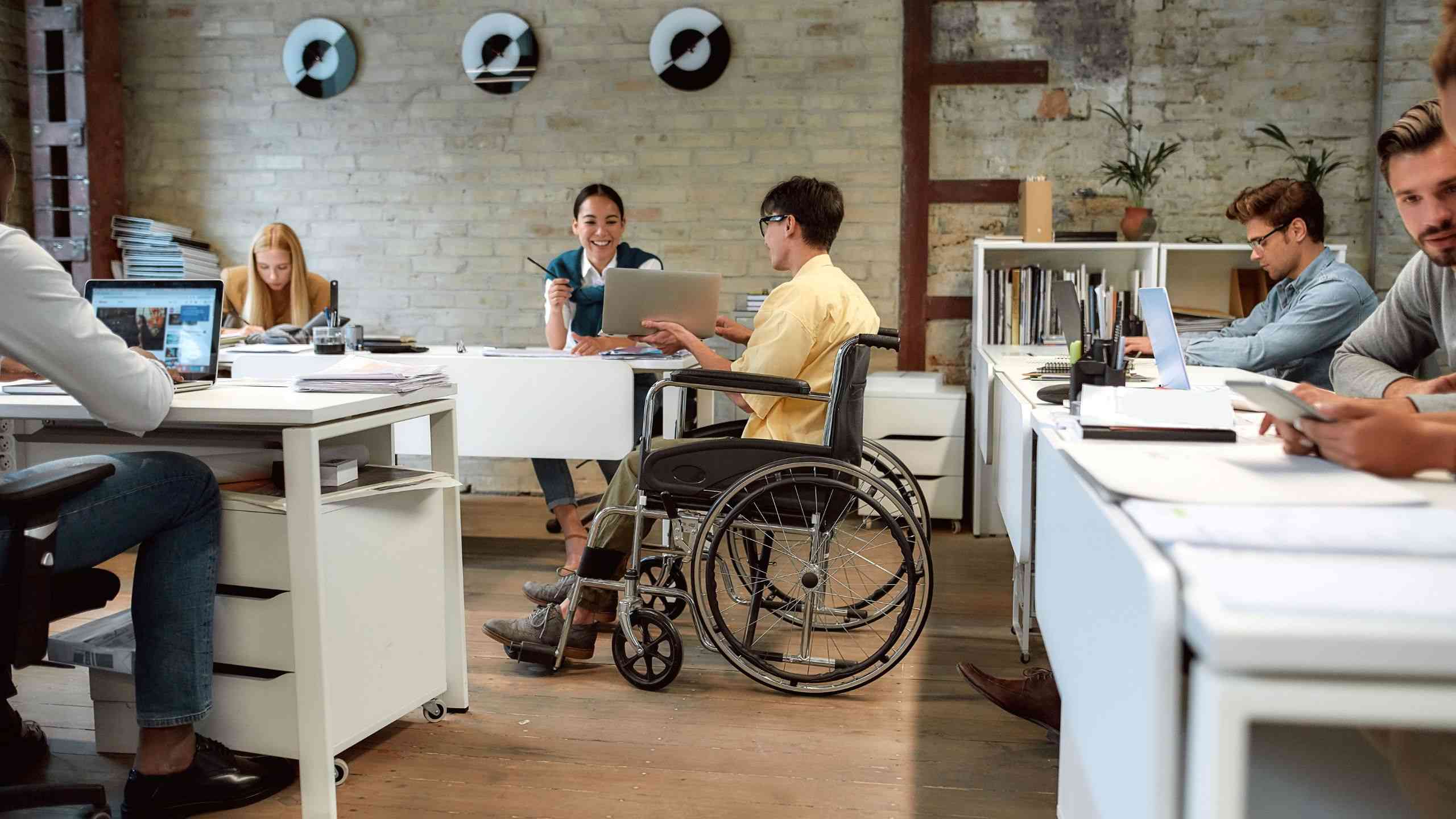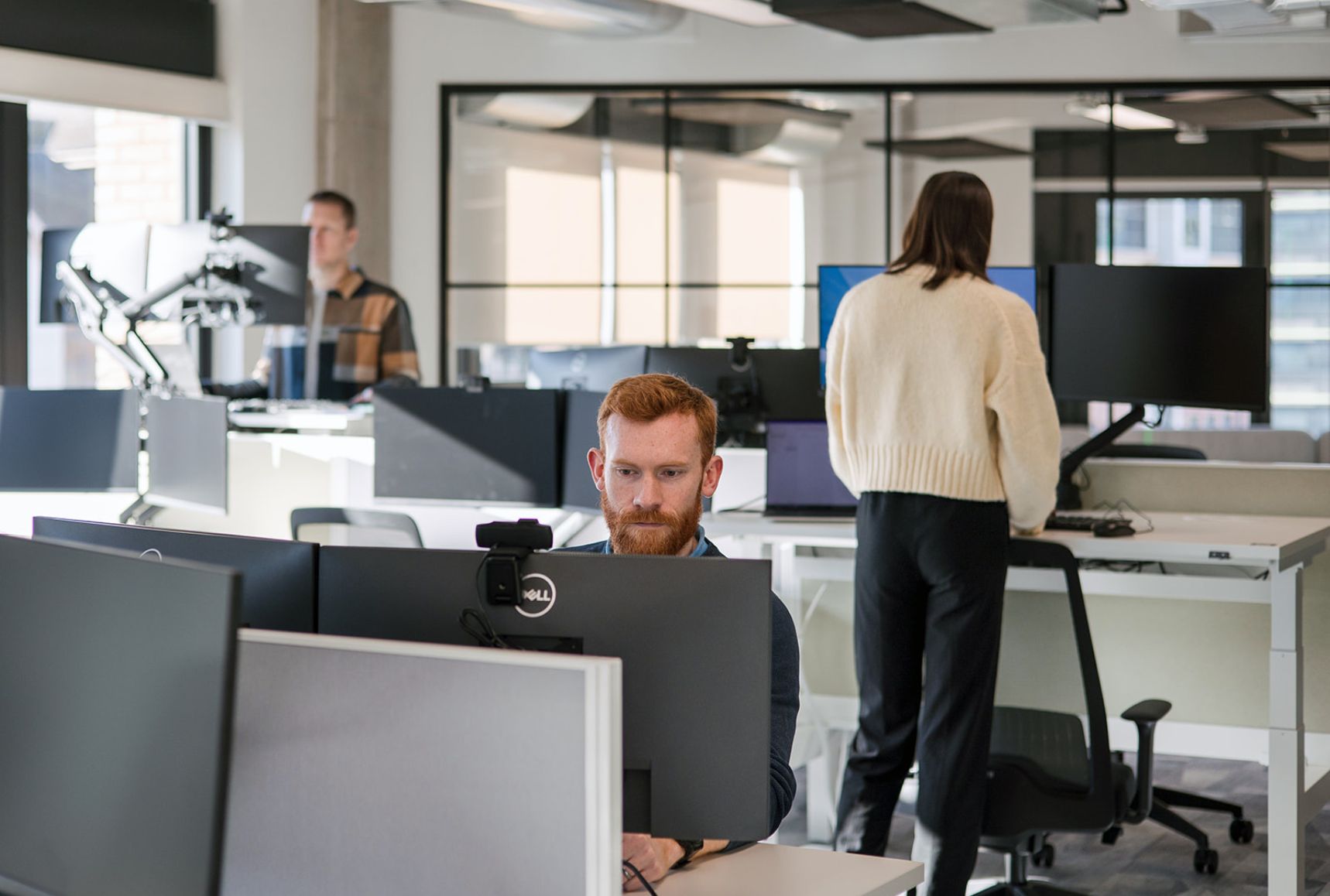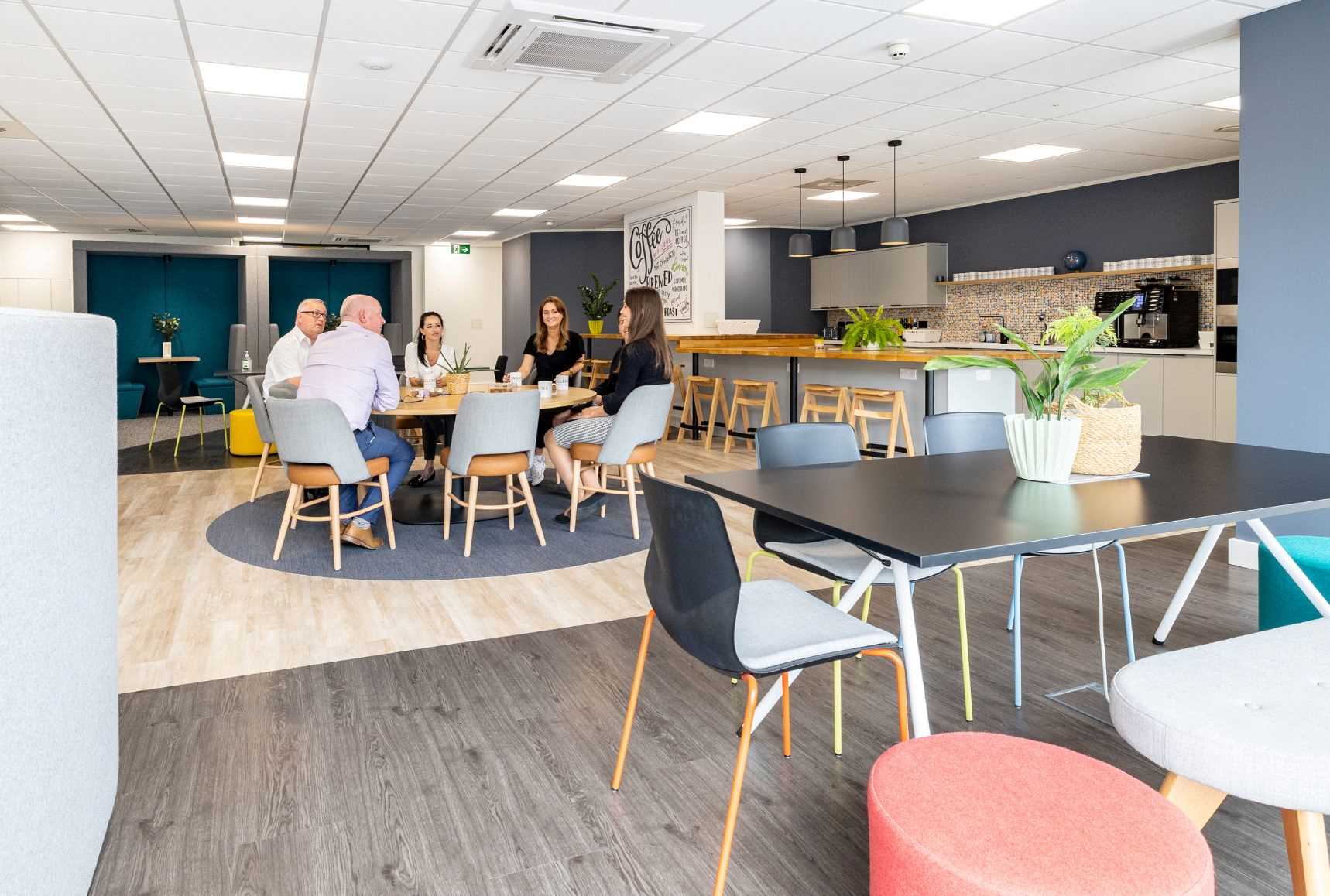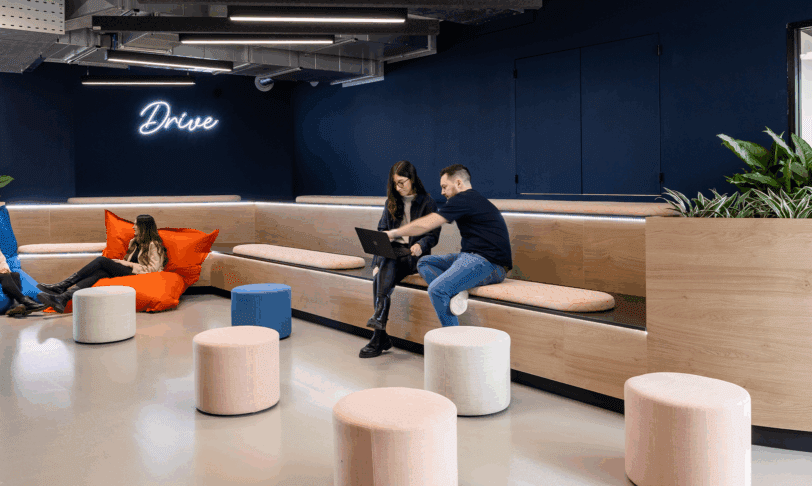Using design to create an inclusive workplace
Did you know that diverse teams are 70% more likely to capture new markets? How about the fact that inclusive companies are 120% more likely to hit financial goals? There is no better time than now to improve inclusion across your business.
Inclusion is key to building a workplace where people feel motivated and inspired. By considering everyone’s unique needs and requirements, workplaces become places where everyone can show up ready to do their best.
Employers should talk openly about what they do to ensure people feel included, valued and respected in the workplace. There’s competition for talent, and it will set them apart from competitors: 41% of managers state they are “too busy” to implement any kind of diversity and inclusion initiatives. As for existing employees, a commitment to inclusivity fosters a culture of commitment and trust.
Creating a truly inclusive workplace requires a conscious commitment. To help you make that commitment, this article will start by delving into the wider subject of workplace inclusion, before taking a comprehensive look at inclusive office design.
Defining inclusion in the workplace
Diversity and inclusion are sometimes treated as though they are interchangeable, but there’s a crucial difference – as summarised in this brilliant quote from Netflix’s very own Verna Myers:
“Diversity is being invited to the party: Inclusion is being asked to dance.”
Verna Myers
At the end of the day, there’s no use in having a diverse workplace if people of varying backgrounds and abilities don’t feel included or valued for what they bring to the table. Here are some of the different types of inclusion that companies should consider as part of their workplace strategy:
Disability and inclusivity in the workplace
17.8% of people in the UK are living with disabilities and they’re more than twice as likely to be unemployed. It’s important to create workplace environments that are welcoming, respectful and accommodating of people with disabilities. This can include providing the necessary resources or adjustments such as ramps, accessible bathrooms and technology aids.
Neurodiversity and inclusivity in the workplace
Respecting neurodiversity in the workplace means acknowledging and embracing different ways of thinking and learning styles. Employers should provide an environment where neurodiverse employees can thrive. This could involve investing in specialised software to overcome any potential communication barriers or, as will be explored further in this article, designing an office space where neurodiverse employees feel comfortable and at ease.
Cultural inclusion in the workplace
Creating a culturally inclusive workplace means people feel valued and considered, regardless of their background, religion or ethnicity. This could mean respecting culturally important days and providing dedicated prayer facilities in the office. Work socials are also an overlooked aspect of workplace inclusion. For instance, more companies are embracing alcohol-free socials so that people who don’t drink for religious or other personal reasons feel included.
Gender inclusion in the workplace
It’s essential to create an environment free of gender bias and stereotypes. This means providing equal opportunities and encouraging gender diversity across all levels of your organisation. Gender inclusion in the workplace can also manifest in flexible and thoughtful policies related to childcare, maternity and paternity leave.
What is the inclusive workplace model?
Specialists in organisational leadership and other academic types have made various attempts at outlining what an inclusive workplace model should consist of. Their findings are necessarily broad but indicate the basics of what it takes to create an inclusive workplace. Naturally, top-down commitment is the first step – and that means a commitment to following through in a focused way.
Elements to consider include widespread participation in decision-making, so everyone can feel encouraged to share their next big idea, centralising workplace wellbeing, and creating an environment where everyone, regardless of their background, feels respected and valued.
Leaders can also foster inclusivity by building flexible workspaces that encourage collaboration. This will provide an opportunity for staff members from different backgrounds to learn from each other and come together in the interest of shared goals.
Leaders should also expect a need to actively build diversity. This could mean implementing anonymous or ‘blind’ hiring practices, taking a hard line on workplace discrimination, and creating equal opportunities for people to advance to leadership or senior positions – if they so wish.
But the main point of this article is to show that no matter what policies and procedures are in place, they can only go so far if the office itself isn’t designed with inclusivity in mind. So how do we achieve this? Get inspired by our expert deep-dive into inclusive office design:
Interaction’s Ultimate Guide to Workplace Ergonomics
Our in-depth guide to workplace ergonomics will help business leaders demonstrate their commitment to the health, wellbeing and happiness of their employees.
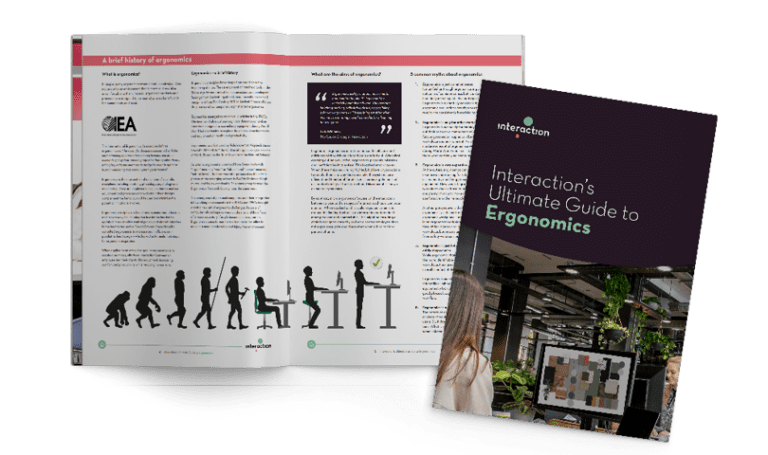
What is inclusive office design?
Inclusive workplace design is an approach that creates a workplace suitable for a wide range of people, regardless of their unique needs or abilities. Disabled people are among the first groups every business should include. 1 in 5 of the working-age population are classed as disabled. While some disabilities are physically apparent, other disabilities are hidden – and it’s important to acknowledge this and consider the entire spectrum of potential disabilities when designing a space.
But it’s not just disability that should be considered when designing an inclusive office. The reality is that every person is different – they have different needs and preferred styles of working. With inclusive office design, differences become an exciting stimulus for creativity and innovation, building a space where everyone is primed to succeed.
Is inclusive design the same as accessible design?
While the terms ‘inclusive’ and ‘accessible’ are related, they are by no means interchangeable. Accessible design is the process of removing physical barriers and creating accommodations for people with specific needs, such as mobility or sensory impairments.
On the other hand, inclusive design is an approach that recognises a broader spectrum of different needs and aims to provide solutions that allow everyone to thrive and deliver their best. It considers factors such as culture, gender, age, and socio-economic status to create spaces where everyone can reach their potential, regardless of their requirements or abilities.
What’s the difference between inclusive and flexible office design?
Inclusive office design means creating spaces where everyone’s needs are being catered to, so people feel comfortable and able to do their best work. Ultimately, inclusive office design respects and incorporates diversity and individuality.
Flexible office design, on the other hand, has two possible interpretations that can be unified. Firstly, it means that your offices can be repurposed to accommodate a range of tasks and goals. The second (but by no means secondary) way of interpreting flexibility is that people can choose where and how they want to work depending on the task and what they need to get it done.
A person’s ideal work environment may change from day to day, so offering choices and flexibility improves outcomes not only for employees but for businesses as a whole.
Chat with Charlie
Get in touch with Charlie, our Relationships Manager to discuss how we could revolutionise your space.
Email: [email protected]
All general enquiries
Phone: 01225 485 600
Email: [email protected]
Or sign up for our newsletter here

How does office design affect wellbeing?
It’s no secret that office design and wellbeing are intrinsically linked. We recently wrote about the importance of workplace wellbeing and how design is a major influence, exploring the benefits of increased wellbeing and how to execute a successful wellbeing strategy. This article goes one step further, focusing solely on how inclusive design can improve wellbeing in a diverse workplace.
A workplace should be a safe, welcoming and comfortable environment for everyone. While your business’s culture plays a leading role in this, the place where your employees work can either help or hinder their sense of wellbeing.
Fostering wellbeing in the workplace means considering your employees’ physical and cognitive needs. Ergonomics are just the start. Simply recognising that different people perform better in different environments helps you to create spaces where they can feel comfortable. They can choose where they work and can adjust and individualise their workspaces to help them deliver better results.
Are certain office layouts more inclusive than others?
An inclusive office layout doesn’t just cater for people who are “different,” it also addresses the fact that our needs can change based on our tasks, preferred styles of working and our mental and physical state.
While you can’t offer an infinite variety of options, you can offer enough to allow employees to feel that they’ve been considered and that their needs are being met. For example, there are times when any person may need a calming, solitary space, and there are times when they want to immerse themselves in the hubbub of a group dynamic.
For this reason, we often advise our clients to go for a broken-plan layout. This combines a range of spaces dedicated to solo working, collaboration, socialising and relaxation. Rather than using rigid partitions to mark out certain zones, you can get creative with floor patterns, signage and open-shelving to create boundaries while allowing people to flow seamlessly between different zones. This gives people more control over their immediate surroundings, while still ensuring they feel part of a wider team.
What are some of the main features of inclusive office design?
Building inclusivity into a workplace isn’t something that should happen in the second half of an office fit-out. It should be a focus point from the earliest stages of its design. Here are some of the factors to consider.
Designing for accessibility
Every aspect of the workspace should be designed with accessibility in mind. Wave goodbye to ‘tick box exercises’ and truly consider accessibility in each and every design choice. For example, core strength, arms, hands and fingers can all be hugely affected by disabilities. Sensor-activated doors, bins and taps as well as accessible door handles are important considerations.
Wheelchair use is another key factor in accessible design. Ramps, lifts, wide passing spaces, multi-height storage, power points and desks are a starting point. Mobile furniture such as free-standing laptop tables (ideally with centred legs) are another accessible option.
Braille, large print signage and clear wayfinding are other examples of accessible design. Symbols and numbers are best-practice options for signage because almost all people find them easier to identify than written words. They allow people with visual impairments, neurological disabilities, and those who speak a different language to use the space safely and easily, allowing them to focus on their abilities rather than any limitations.
Considering neurodiversity
When thinking about designing an inclusive space for neurodiverse people, it’s best to consider its sensory impact, because people with neurodiversity are often more vulnerable to sensory overload. Here’s how your workplace design can help with this:
- Touch: include tactile materials that provide comfort but not distraction, soft surfaces rather than hard, and seat pads and cushions for comfort.
- Smell: try to keep food preparation areas and cleaning cupboards away from working zones, since a strong smell can often be even more of a distraction for people with sensory issues.
- Sound: make use of acoustic baffling and furniture, carpets and soft seating to reduce noise travel. Quiet zones and wellbeing rooms offer retreats for those experiencing sensory overload and a haven of productivity for those who prefer to work in silence.
- Sight – some colours can make people feel tense or distracted, whilst others promote calm and focus. Lighting is another key aspect. Whilst adequate lighting is necessary, some individuals may be light-sensitive or prone to sensory overload. Adjustable and customisable lighting is the optimum solution.
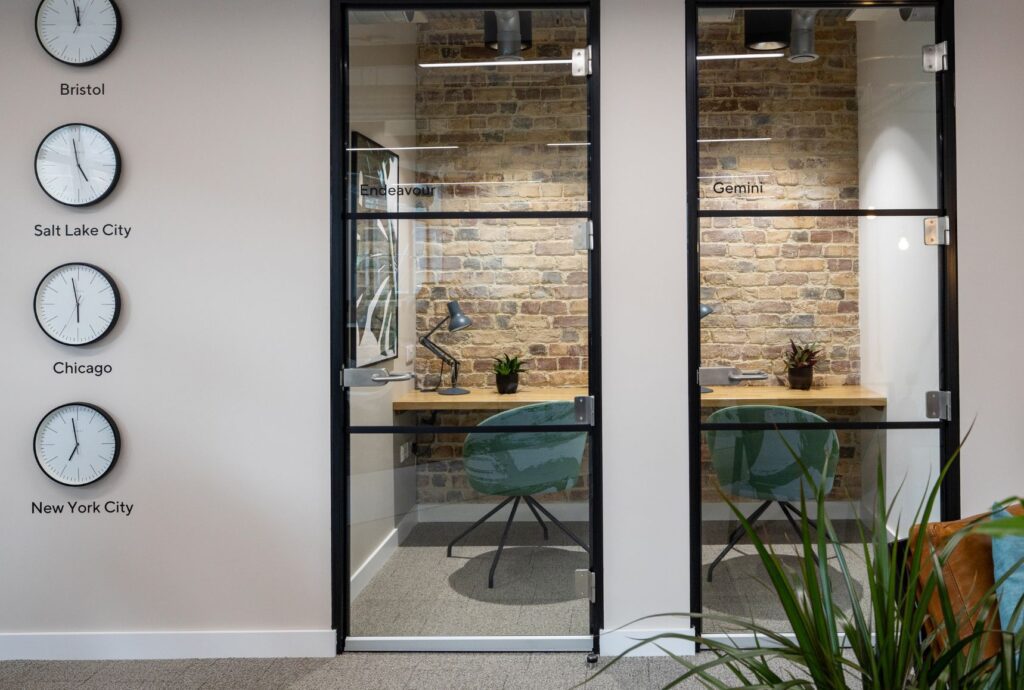
Accommodating diversity
An inclusive workplace is suitable for all types of people, spanning different genders, sexualities, races and religions. It is important to break down once-traditional barriers so that everyone can attend work and feel comfortable. Mothering rooms, inclusive prayer rooms and gender-neutral toilets are just some ways to support a diverse workforce.
Aside from accommodating diversity, the workplace can be designed to celebrate it and realise its benefits. Here, interaction between people from different walks of life will be key to feelings of acceptance and belonging. Create spaces where employees can work together, socialise and get to know one another in an informal setting.
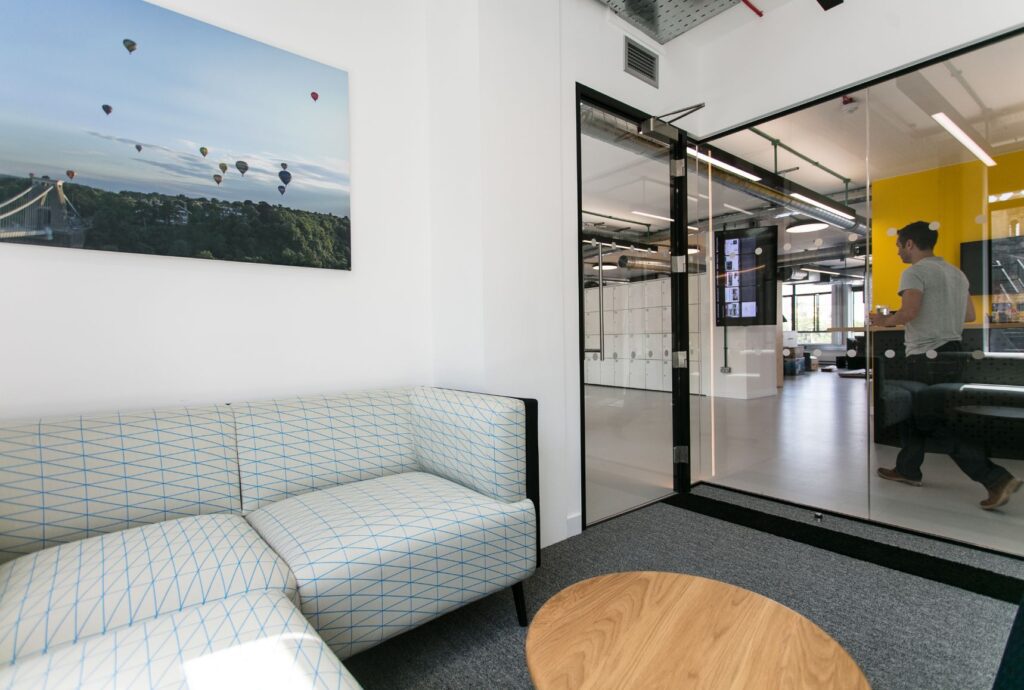
What are the benefits of inclusive office design?
Does inclusive office design increase employee engagement?
An inclusive workplace design will help to encourage employees to come into the office. Deloitte found that 83% of millennials are actively engaged when they believe their organisation fosters an inclusive culture, compared to only 60% when they don’t. In simple terms, the fewer obstacles in the workplace for any individual, the more accessible it is to all your employees.
If an employee cannot move easily around the workspace, carry out day-to-day tasks in the office, concentrate or have their needs fulfilled, they will not be able to focus on their job.
If inclusive design measures are put in place to break down these barriers, your team can function more effectively and more easily. Everyone feels empowered and feels as if the organisation supports them.
Empowerment and the feeling that the organisation supports them helps people to experience greater engagement at work. It’s widely acknowledged that employee engagement improves organisational outcomes, yet Gallup found that only 15% of the workforce feel like they are currently engaged in their work. There are many things to consider when working to boost employee engagement, but office design that makes everyone feel included is an important consideration.
Is there a link between inclusive office design and staff retention?
People who don’t feel comfortable or supported at work are likely to seek a new role where they feel respected and free to be themselves. Monster Worldwide surveyed 1,000 people and found that 83% of ‘Gen Z’ people say that a company’s commitment to diversity and inclusion is a priority when choosing an employer. Your workplace design reflects your business’s attitude towards its employees. Always consider the message that design choices send. Are they welcoming to everyone? Do they “tell” your employees that the organisation cares about them?
Inclusivity is more than just an attitude: the material proof lies in your office design and how it empowers employees to be themselves and still feel valued.
Do inclusive offices have a higher market value?
If you’re renting out furnished offices, companies that hope to boost their reputation for inclusivity will see your commercial property as an opportunity to increase their brand value. If you (or they) are hoping to attract investors, inclusivity becomes a talking point that may pique their interest.
An inclusive space enhances productivity and encourages innovation. That’s because a diverse range of people in the talent pool may produce a broader range of perspectives and ideas that lead to better business outcomes. When your office space provides a ready-made backdrop for inclusivity, more prospective tenants will be interested in it, and that means you can attract higher-value clients.
Measuring the effects of inclusive office design
Having gone to the effort of trying to build inclusivity into your physical workplace, you should seek to measure the impact of your efforts. Alternatively, you may want to determine whether your existing office is as inclusive as it could be. To get the right type of data, we advise going directly to your employees. This could take the form of an anonymous survey with questions such as the following:
- Does the office design leave you feeling that you are fairly treated at work?
- Does the office design help to bring different people together as a united team?
- Do you feel that the workplace allows you to make your own decisions about where and how you prefer to work?
- Do you have access to spaces that allow you to feel safe and comfortable?
- Does the workplace show that we care about you and want you to feel like you belong?
- Do you think that the office design meets your colleagues’ needs?
These questions can then form the basis of bespoke inclusion metrics and benchmarks, so you can quantify the impact of any current and future design changes.
Create an inclusive workplace with Interaction
Inclusivity, creativity, and productivity belong together when you choose inclusive office design. You can embark on a trial-and-error process, or you can choose an experienced office design and fit-out company. Discuss further with our expert team by reaching out on 01225 485 600 or schedule a chat with Charlie, our Relationships & New Accounts manager?
Join the Interaction community
Sign up for our newsletter to stay up-to-date with the latest insights
on the modern workplace and commercial property trends.
